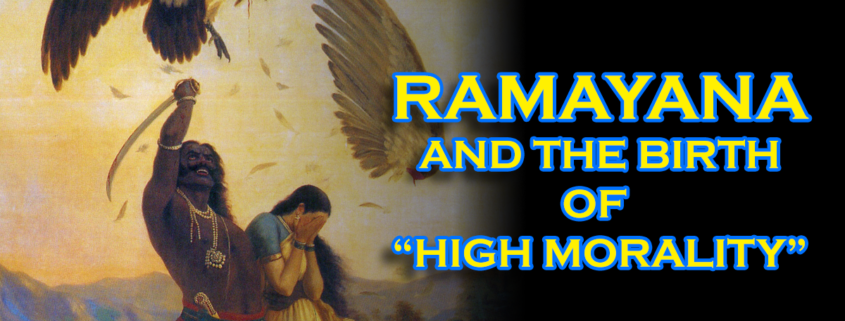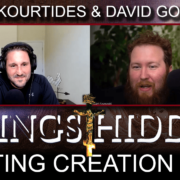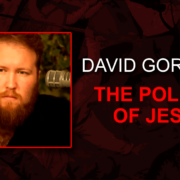Ramayana and the Birth of ‘High Morality’
The study of ancient literature, particularly the great mythologies, helps us decipher the origin of culture and society. We come to learn that within each heroic and magical tale, and beneath each culture that springs from that tale, is the story of a lynch mob and a sacrificed victim.
Take, for example, the great poem of Ramayana. This epic tells us the story of a banished prince who lives in exile as a hunter along with his wife. The name of this prince is Ram and his wife Sita. One day, a wicked king named Ravana deceives and kidnaps Sita; he takes her and imprisons her within his fortified kingdom of Lanka. Ram, the archetypal hero, must now undertake a hazardous journey out of his home and into the wild in order to save his wife. He raises an army and invades Lanka. After a fierce battle, he slays Ravana and thus saves his wife.
A Jungian analysis of this story reveals the archetypal hero’s journey. Much like St. George, Ram ventures out into the unknown, confronts the dragon, and saves the virgin. But a Girardian examination reveals a deeper truth–a truth that is more real and grittier than that of an extravagant fable with moral truths.
The text of Ramayana alludes to past struggles that may have occurred somewhere around 1500 BC between armies from Persia/Central Asia and the Dravidian peoples. In those days, it was not uncommon for scribes to romanticize the feats of their beloved patron kings. In the light of this knowledge, the Ramayana can be interpreted as a war between two kings, or maybe it is the sacrifice of a defeated king. In traditional artistic depictions, Ravana is usually painted or carved out as a powerful man with dark skin and features similar to that of Dravidians. Also, his kingdom of Lanka is thought to be situated somewhere around or within modern-day Sri Lanka.
Once Ram has defeated Ravana, he establishes a period of Ram Rajya–a culture/state of high morality. This is reminiscent of Cain’s feat after he murders his brother. Like Ram, Cain founds the first civilized society. And civilization, culture, society, and even language are all the result of violence, specifically the sacrifice of a single victim, who is later deified because of the catharsis that comes from his demise.
I have personally found Jung’s study of the unconscious mind fascinating, but I think Girard was right when he said Jung didn’t go deep enough. Had Jung gone deep enough in his study of mythological symbols, not only would he have been able to uncover the slain victims, but he would have also recognized the reverse mythology of the gospels that internalizes the sacrificing within the realm of the person.
When Christ saves the adulterous woman from getting stoned to death, he challenges each person to look within themselves, and in the process, he breaks the hypnotic frenzy of the crowd. The individual recognition that each of us has within us an inner persecutor, who is ready to burst out at any moment, is probably the most potent weapon against collectivism. It is this weapon that causes us to transform and start imitating Christ.
Today, we need not adhere to groupthink, and we need not sacrifice a scapegoat to keep our societies functioning. The ancient stories of good vs. evil, retold countless times today, were subtle cover-ups for violent scapegoating. The only real battle is within our hearts; any external battle is false and based on a lie. Once we realize that we are each potential persecutors, we create within us the heart of Christ. We develop a heart that naturally comes to love our neighbors, whether they be victims or oppressors. This was Paul’s Damascus experience, and it should be ours as well.












Leave a Reply
Want to join the discussion?Feel free to contribute!